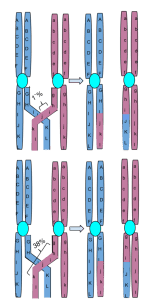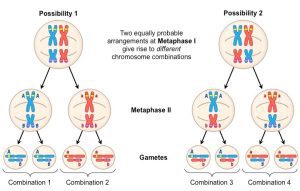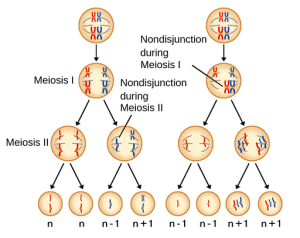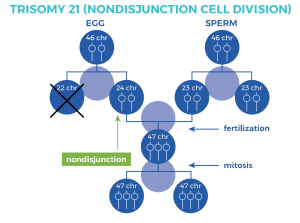Meiosis and Genetic Diversity
Genetic diversity is the foundation of evolution and survival in living organisms. Meiosis plays a crucial role in generating this diversity, and there are three key processes within meiosis that significantly contribute: crossing over, independent assortment, and random fertilization. Understanding these mechanisms is essential to grasp the importance of meiosis in ensuring genetic variation across generations.
1. Crossing Over
Crossing over is an incredibly important process that occurs during the first round of cellular division in meiosis (Meiosis I). During this phase, homologous chromosomes—which are two versions of the same chromosome, one inherited from each parent—exchange genetic material at equivalent locations.
To illustrate, imagine chromosome 2 in humans, which may have a gene for eye color. One version of chromosome 2, from your mother, might carry a dominant allele for brown eyes, while the version from your father may have a recessive allele for blue eyes. During crossing over, these homologous chromosomes exchange segments, effectively shuffling the genetic content without adding or subtracting any genes.
This recombination results in new combinations of alleles, leading to unique daughter cells at the end of meiosis, each distinct from the parent cell and each other.

2. Independent Assortment
Independent assortment refers to how chromosomes align and separate during the first and second rounds of meiosis. During Metaphase I, homologous chromosomes line up randomly at the center of the cell. This random alignment determines how chromosomes are distributed to the daughter cells.
To illustrate, imagine a scenario where the chromosomes are blue and red—there is a 50% chance that both blue versions of the chromosomes line up on the same side, and another 50% chance that the chromosomes align in mixed pairs. The way these chromosomes are oriented will determine the genetic makeup of the resulting gametes.
This randomness adds an immense level of variation. The number of possible unique combinations due to independent assortment is calculated as 2^n, where n is the number of chromosome pairs. In humans, this results in over 8 million possible combinations (2^23) from independent assortment alone—without considering crossing over or random fertilization.

3. Random Fertilization
Random fertilization is yet another mechanism that adds to genetic diversity. It means that, among potentially thousands of sperm produced by an individual, each with unique genetic makeup, any one of them could fertilize an egg. Similarly, each egg produced is genetically distinct from others. This randomness in fertilization ensures that even with the same parents, the genetic makeup of each offspring will be unique.
Nondisjunction: When Meiosis Goes Wrong
While meiosis is generally a well-coordinated process, errors can occur. One such error is nondisjunction, which happens when chromosomes fail to separate properly during Anaphase I or II.
If nondisjunction occurs during Meiosis I, all resulting haploid cells will have an abnormal number of chromosomes. If it happens during Meiosis II, only two of the four resulting cells will be affected—one will have an extra chromosome, and another will be missing one.
A well-known example of nondisjunction is Down syndrome, which is caused by an extra copy of chromosome 21. This condition illustrates how even a slight deviation in chromosome number can lead to significant developmental changes.

Key Takeaways
The purpose of meiosis is to create genetic diversity, which is vital for the survival and evolution of species. The three major contributors to this diversity are:
Crossing Over: Exchange of genetic material between homologous chromosomes.
Independent Assortment: Random alignment of chromosomes during meiosis.
Random Fertilization: Random pairing of unique egg and sperm cells.
On the flip side, errors like nondisjunction can lead to genetic abnormalities, often with profound effects. Understanding these concepts is crucial for anyone studying genetics and biology—especially since genetic diversity is what allows life to adapt, evolve, and thrive.
For your AP Biology exam, make sure you understand these processes well, as questions about genetic variation are common. Remember: diversity is key to life.








